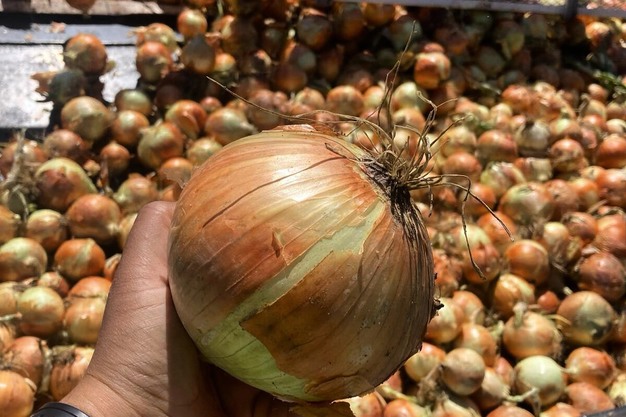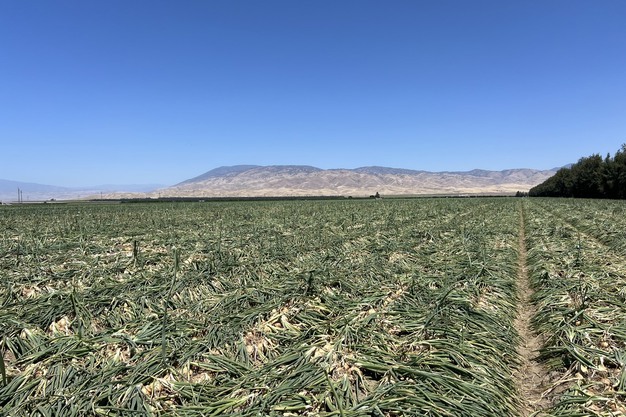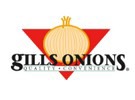Following the high onion pricing seen in the spring, red and yellow onion prices have come down again thanks to greater supply. "The industry had a very, very tight spring. The commodity markets saw very high demand and low supply," says Megan Jacobsen with Gills Onions, whose value-added onions are under consistent contract pricing year-round. "We saw unprecedented numbers in the red market and fairly significantly high numbers in the yellow market and that has all now stabilized. More regions are going into harvest and the supply is returning to normal numbers in the commodity market. That does have a domino effect on the value-added market."
 Steve Gill in the field.
Steve Gill in the field.
Gills Onions, which grows its crop for processing, is currently harvesting in Bakersfield, California in the San Joaquin Valley. Harvest will continue in this region for another five to six weeks and then move to the west side of Fresno, California. The company's supply looks similar to this time last year.
Notably, California's Central Valley is still undergoing an extended heat wave in which temperatures are reaching as high as 115 degrees Fahrenheit. "The onions we grow do like higher temperatures and we're used to them but we're up against very, very high temperatures so we're keeping a close eye on those onions," says Jacobsen.
 The company's supply looks similar to this time last year.
The company's supply looks similar to this time last year.
Foodservice demand peaking
As for demand for onions for the foodservice business, strong demand in the spring led into strong summer demand–in fact, demand peaks in the summertime for processing onions. "Foodservice numbers for many commodities are higher during this summer because of travel and kids are out of school and more," says Jacobsen, noting of its business, 70 percent is destined for foodservice, 29 percent goes towards ingredient buying and the remaining 1 percent is retail. "So while foodservice demand peaks in the summer, supply in the summer also remains strong."
In processing onions, demand continues to grow particularly on the company's whole peel and diced onion lines. "We're still in this post-pandemic era where there is the need to reduce labor. When customers convert to value-added, it always begins with whole peel but our diced line is our number one seller," says Jacobsen.
 Gills Onions is harvesting in Bakersfield, California in the San Joaquin Valley.
Gills Onions is harvesting in Bakersfield, California in the San Joaquin Valley.
With that in mind, concerns loom over inflation in the market and how it can impact the consumption of fresh produce. "Inflation has affected what consumers can buy in the grocery store so we're watching this and we're wondering how there can be relief for consumers buying produce or chefs buying produce for their restaurants while also allowing our companies to pay their bills and make money," says Jacobsen.
 For more information:
For more information:
Megan Jacobsen
Gills Onions
Tel: +1 (559) 284-4851
[email protected]
www.GillsOnions.com
